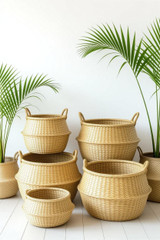Healing crystal Obsidian , healing obsidian benefits
Obsidian
The natural glass obsidian forms when molten rock rapidly cools. Due to its softness, it is most often worn as earrings or pendants as it is a popular gemstone with a black color. Breaking it creates cutting tools that are very sharp. Prehistoric peoples used it for this purpose. We use it today to produce surgical blades.

Luster
Typically, obsidian has a vitreous (glass-like) luster.
Transparency
The stone often has a translucent appearance.
Cleavage
Obsidian typically has conchoidal fractures, appearing as a smooth, curved, and fractured surface.
Manufactured
Jewelry and ornaments made from obsidian are usually tumbled.
Physical Properties
Crystal System
Amorphous
Colors
Black, bluish, mahogany, golden, peacock, etc
Texture
Glassy
Learn More
Chemical Properties
Chemical Classification
Volcanic glass
Formula
SiO2
Silica (SiO2) Content
70%
Price
Obsidian's price is influenced by its weight. In general, tumbled stones around 2.5 cm across cost $1-$5/piece.
Healing Properties
A protective stone, obsidian offers truth-enhancing properties that shield against negativity. It is said to clear the mind, releasing mental tension that can cause confusion. The stone can be carried with you to ward off negative forces or kept in your home or office for added protection.
Metaphysical information is provided here. Using crystals should not replace medical treatment.
Meaning
Stone age people used obsidian to make spears and arrowheads. Ancient Mayan and Aztec cultures believed that the stone held magical properties and would allow them to communicate with the spiritual realm. The stone was used to predict the future by Mayan prophets. Amulets and gravesites were often decorated with it.
How to Select
The carat weight, cut, and artistry of obsidian determine its price. In some cases, color can also be a deciding factor, such as when it comes to rainbow obsidian. Obsidian can even be crafted from glass. In genuine obsidian, inclusions are often visible under magnification. Magnetism can also be observed in authentic specimens when exposed to a handheld magnet.
Formation
Obsidian is usually found in areas where rhyolitic eruptions have occurred. It can be found in Argentina, Armenia, Azerbaijan, Australia, Canada, Chile, Georgia, El Salvador, Greece, Guatemala, Iceland, Italy, Japan, Kenya, Mexico, New Zealand, Papua New Guinea, Peru, Scotland, The Canary Islands, Turkey and the United States. Within the calderas of Newberry Volcano and Medicine Lake Volcano in the Cascade Range of western North America, and at Inyo Craters east of the Sierra Nevada in California, obsidian flows can be hiked on. In Yellowstone National Park a mountainside contains obsidian between Mammoth Hot Springs and the Norris Geyser Basin, and deposits can also be found in Arizona, Colorado, New Mexico, Texas, Utah, Washington, Oregon, and Idaho. Virginia, Pennsylvania, and North Carolina are also home to obsidian. The central Mediterranean is mainly made up of four deposit areas: Lipari, Pantelleria, Palmarola, and Monte Arci. Early Aegean sources were Milos and Gyali. Ac*göl town and the Göllü Da* volcano were the most important water sources in central Anatolia, one of the most important water sources in prehistoric Near East.
Uses
Its ability to be cut into extremely sharp blades enabled ancient civilizations to make many tools out of obsidian. As a gemstone, obsidian is also commonly used, or larger pieces may also be carved into decorative sculptures.
Recent Posts
-
Order the Best Boss Day Gifts for Male & Female Bosses in the UAE from Craftihouse.com
Every year, Boss’s Day is the perfect opportunity to show appreciation for the people who lead, ment …13th Oct 2025 -
How This Gift Came to Life: The Story Behind Our Palm Leaf Baskets
How This Gift Came to Life: The Story Behind Our Palm Leaf Baskets In a world where everything is be …8th Oct 2025 -
Handmade Leather Key Chains – Timeless Souvenirs & Everyday Companions
Handmade Leather Key Chains – Timeless Souvenirs & Everyday Companions Introduction In a world where …25th Sep 2025



